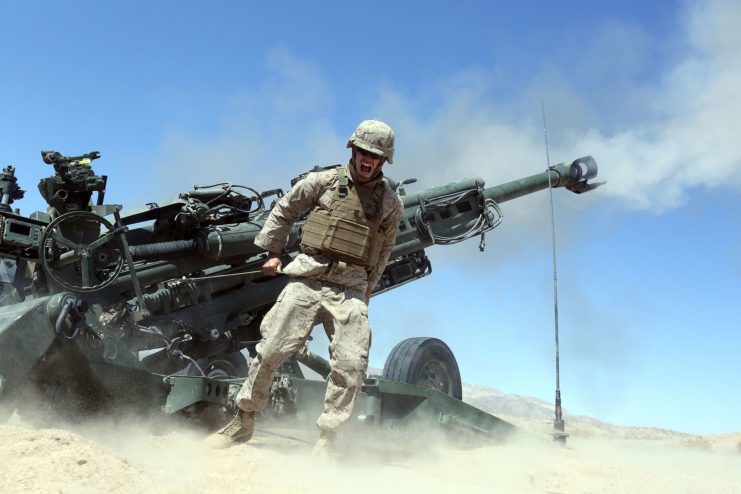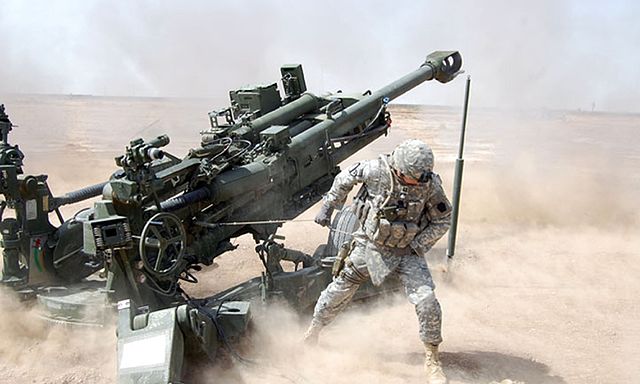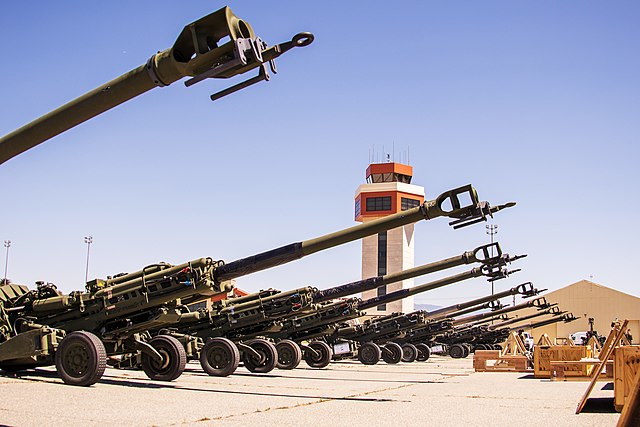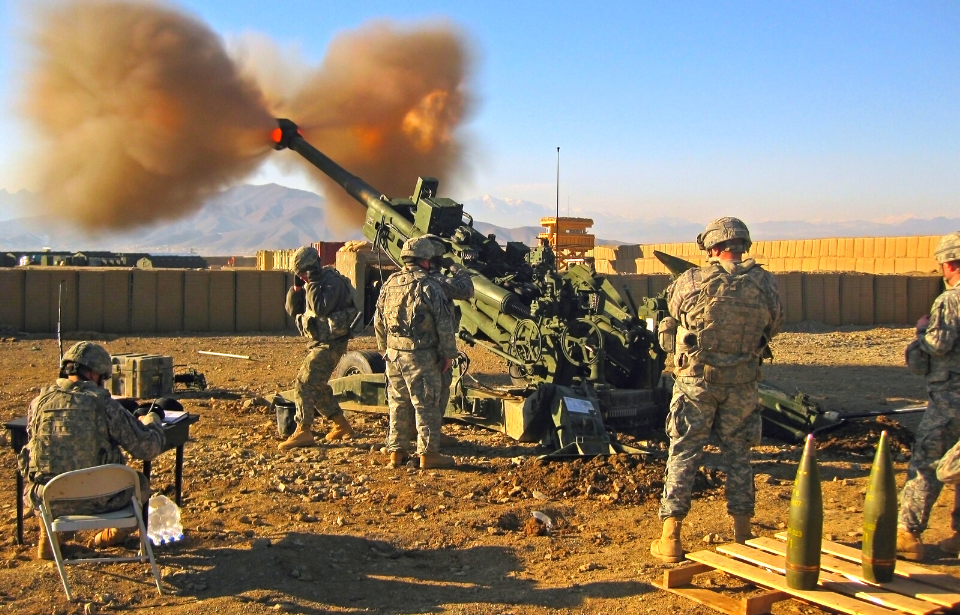The M777 howitzer might not look all that intimidating when placed alongside its much larger counterparts, but this small and lightweight artillery system packs quite a punch. Primarily used by branches of the US military, it’s since been adopted by a number of international armed forces, and has seen use in such conflicts as the War in Afghanistan and the Russo-Ukrainian War.
Development of a lightweight artillery system

In the 1980s, the United Kingdom’s Vickers Shipbuilding and Engineering’s Armaments Division began work on what became the M777 howitzer. When the company was purchased by BAE Systems, a large portion of production was changed to use American-made parts, including the gun barrel, which is manufactured at the Watervliet Arsenal in New York.
After undergoing testing at Yuma Proving Ground, the M777 was ready to be adopted by both US and international military forces. Over the years, a number of variants have been developed, including the M777A1, which saw the addition of satellite GPS, among other upgrades; the M777A2, which makes the unit compatible with the M982 Excalibur round; the M777ER; and the Canadian-used M777C1.
M777 howitzer specs

Most notable about the M777 howitzer is that it’s smaller and lighter than its predecessor, the M198 howitzer. At 4,200 kg, it’s 41 percent lighter than the M198 and 25 percent smaller, meaning it can be transported by helicopter (MV-22 Osprey, CH-53E Super Stallion, CH-47 Chinook), transporter aircraft (Lockheed C-130 Hercules) and by air-braked vehicles weighing more than 2.5 tons.
This makes it not only portable by land, sea and air, but highly deployable. What’s more, when towed by truck, it can be transported along with the equipment, tools and crew needed to fire and maintain it.
The minimum crew needed to man the M777 is five, with the average numbering around eight. However, Army veteran Patrick Abrams told Coffee or Die that just three individuals can man the weapon if absolutely necessary, saying, “You need the chief, you need the gunner, and you need someone to load the rounds and fire it. You can fire it with very, very few people if you absolutely have to.”
The M777 howitzer uses a digital fire-control system, which allows it to be put into action quickly. It’s also capable of firing a number of 155 mm ammunition variants, including the M107, the M549 High-Explosive Rocket Assisted (HERA) round, the M712 Copperhead 155 mm caliber cannon-launched guided projectile (CLGP), the M795 and the M982 Excalibur, a GPS-guided projectile. The latter is effective at 40 km, and is able to strike within 10 meters of its target.
While effective on its own, the M777 is best used alongside counter-artillery radar systems, such as the Hughes AN/TPQ-36 Firefinder. These systems are able to track incoming enemy artillery and calculate where it was fired from, allowing the M777 team to launch a counter-attack at that position.
Speaking with Coffee or Die, an unnamed US Army officer gave a great overview of the M777 howitzer:
“It’s much more lightweight than just about any other howitzer in the world. That allows you to move it more quickly, to put it into more difficult terrain in some cases, so you can put it in places where the enemy wouldn’t expect it and wouldn’t be looking for it. And, critically, it allows those guns to shoot and then be quickly displaced somewhere else where they can hide or where they can shoot from a different location.”
The M777 howitzer is used by many countries

Today, the M777 howitzer is used by the ground forces of Australia, Canada, Columbia, India, Saudi Arabia, Ukraine and the United States. The US Marine Corps officially adopted the M777 in 2005, with the Army replacing the M198 howitzer with it the next year.
Both the Brazilian Navy and the United Arab Emirates Armed Forces are currently looking into adopting the M777, with BAE Systems working on a development plan with Emirates Defense Technology (EDT) to make UAE use of the howitzer a reality.
The M777 howitzer made its combat debut during the War in Afghanistan, and has since been used in a number of conflicts, including the Iraq War, the ongoing skirmishes between China and India, and the civil wars in Yemen and Syria. Between November 2018 and April 2019, a number of M777A2s were deployed to Iraq’s border with Syria, in support of the Syrian Democratic Forces during the Battle of Baghuz Fawqani.
More from us: M142 HIMARS: The Artillery System Capable of Providing Combat Support in All Conditions
Most recently, the M777 has seen use in the Russo-Ukrainian War, prompted by the Russian invasion of Ukraine in February 2022. Canada, Australia and the US have provided units to the Ukrainian forces, with the US, in particular, sending over 100 M777s and hundreds of thousands of units of 155 mm ammunition.
